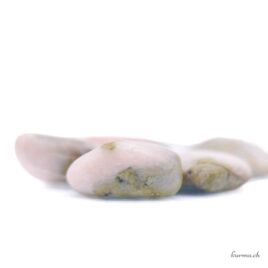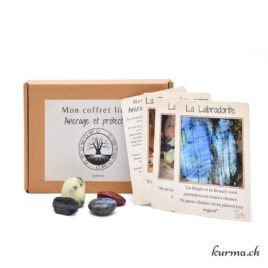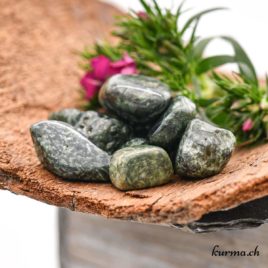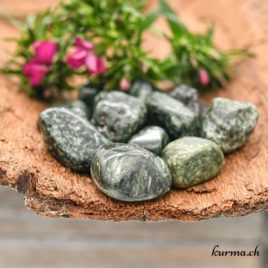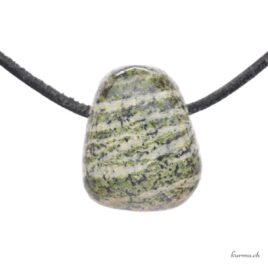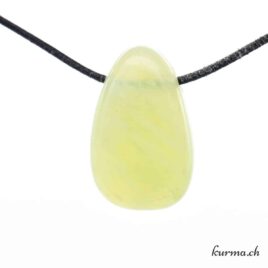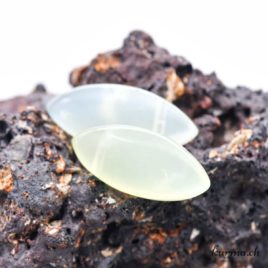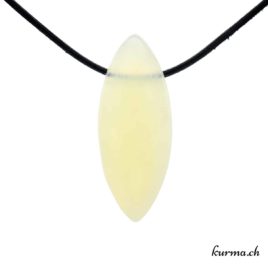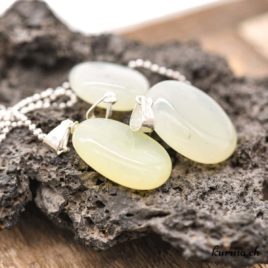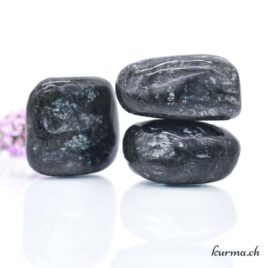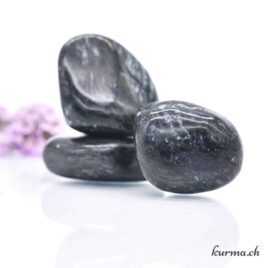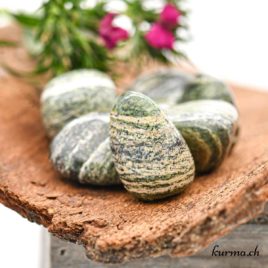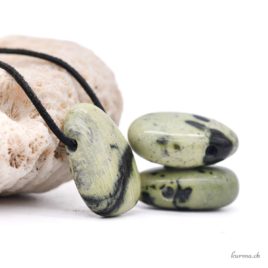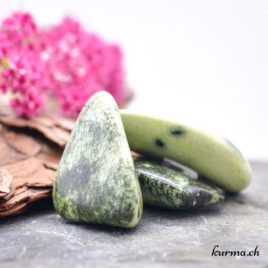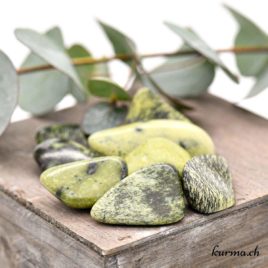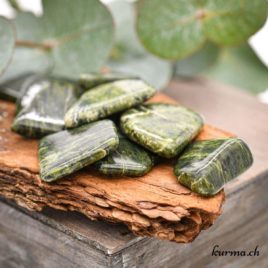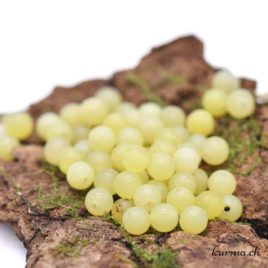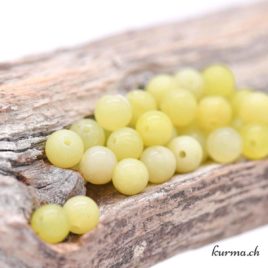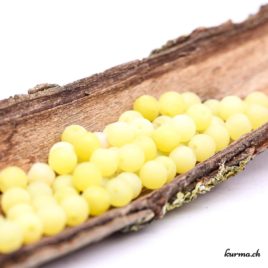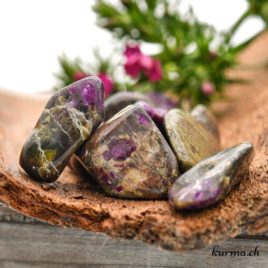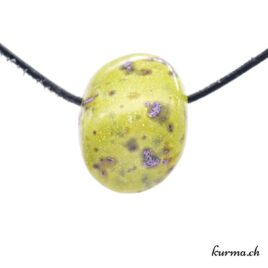The Serpentine
The mysterious Serpentine has been used as a stone of protection and healing for millennia.
The virtues and properties of Serpentine in lithotherapy
With Serpentine, you learn to shed your skin, to rid yourself of your shackles, to be fully master of your destiny with your new skin resplendent with your new awareness. There's no excuse not to take charge of your life, no matter what situation you find yourself in!
She is the ally who reveals your own guide in the jungle of your life. With her, you become aware of what is toxic for you and what is not, what nourishes you and what costs you energy. As an adventurer, you learn how to set limits and defend your space, your territory, your place, even if it means being fierceand not aggressive) to avoid being eaten.
It teaches you to overcome your fears, so that you can explore new horizons conducive to your evolution and it invites you to plant your roots deep in the earth, so that you can assume your responsibilities and not stumble when difficulties or challenges appear on your path.
It's a stone that's been known for millennia to protect the body and mind from all kinds of aggression and poisoning, because if you take control of your life, set your limits and free yourself from old patterns, nothing and no-one will attack you. And if this happens, the Serpentine will help you to understand the message and to make the necessary changes to ensure that it never happens again.
It can also be used to promote perception of the subtle worlds, develop your extrasensory abilities and facilitate the trance state conducive to visions.
It's known as the "traveler's stone" because, in addition to being a formidable protector, it brings the confidence needed for any adventure that takes you out of your comfort zone.
On a physical level, Serpentine is renowned for its detoxifying properties and is recommended in cases of poisoning. It can alleviate heart rhythm disorders, act as an antispasmodic, which is welcome in cases of menstrual pain, and is beneficial in cases of gastric acidity and kidney disorders.
It can be of great help to people suffering from Alzheimer's disease or dementia. It improves magnesium absorption and helps diabetics by limiting the risk of hypoglycemia.
How to use a Serpentine
- Wear a Serpentine talisman directly against your skin to benefit from its everyday virtues.
- In case of mental agitation or panic, place a serpentine at your heart, a rock crystal or amethyst on your forehead and a black tourmaline under the soles of your feet.
- In case of agoraphobia or claustrophobia, hold a Serpentine in your hand to prevent the anxiety from becoming too strong.
- Don't understand why you're having this or that difficulty? Take a moment to relax with shamanic music and your Serpentine placed over your 3ᵉ eye.
Caution! Serpentine can be toxic as an elixir!
Where to place a Serpentine?
- A Serpentine in your living space will diffuse protective energies conducive to awareness.
- Place it under your pillow in case of nightmares, night fears or insomnia.
- In your car to avoid accidents.
- In your driveway to mark your territory.
Who is the Serpentine for?
- For people who are afraid of the unknown, feel anxious or are always under attack.
- It is recommended for all travelers and those who are often confronted with the unknown, and those who work far from home.
- For and who work with animals to prevent bites, or for people in occupations involving a high risk of physical and mental aggression.
- For people who frequent big cities and crowded places like subways or shopping malls.
- For people undertaking personal development initiatives.
How to purify a Serpentine?
Moon/Sun, running water, earth, waveform, fumigation, singing bowl, breath/wind, prayers...Chakras
1er and 4ᵉ Chakras - Root and HeartAstrological signs
Pisces, Gemini and LibraElement
WaterSerpentine in mineralogy
Serpentine is a group of minerals made up of Antigorite (laminated Serpentine) and Chrysotile (fibrous Serpentine) of the phyllosilicate class.
Serpentines are formed by the metamorphosis of magnesium-rich silicates such as Olivine (Peridot). Olivine is transformed into Serpentine by silica.
They are basic magnesium silicates containing aluminum, chromium, iron, manganese and nickel.
There are many different coloured varieties of Serpentine, which can be opaque or translucent:
- Serpentine chita: very dark green to bottle-green, often mottled or zebra-striped.
- Chrysotile: fibrous green with silver stripes.
- Yellow serpentine: light green to yellow.
- Serpentine silver eye: olive green and silver with stripes.
Did you know?
- There is a species of Canadian freshwater turtle called the snapping turtle.
- Many commercially available carved objects purporting to be made of jade are made of Serpentine, as quality jade is rare and expensive.
The history of Serpentine
Its name comes from its resemblance to the skin of snakes, from the Latin serpens. It has also been called Orphite, from the Greek lithos orphites.
Serpentine was already known in Mesopotamia over 5,000 years ago as a material for seals. On this stone with its oily surface, wax and clay do not stick.
Serpentine has been used extensively by many cultures around the world, in their medicines and religions, as well as in the carving of decorative objects and the manufacture of jewelry. It has been considered a stone of protection for thousands of years.
In Egypt, it was a symbol of regeneration, for the Romans it symbolized the guardian spirit and they used it in marble form to create objects and decorate temples. The Aztecs linked it to the waters of Mother Earth, the Maoris inlaid it into the hulls of their boats and used it to make protective amulets and the Celts used it to facilitate trance-like states during rituals.
In the West, in the Middle Ages, and in civilizations around the world, it was reputed to protect against and cure snakebites, black magic and disease. In medieval times, it was also used to enhance the curative powers of remedies.
Lithotherapy
- Element(s) :
- Zodiac(s) :
- Libra, Gemini, Pisces
- Purification :
- Singing bowl, Water, Fumigation, Moon, Form waves, Sun, Breath, Earth
- Caution(s):
- Toxic elixir
- Illness(es) :
- Alzheimer, Diabetes
- Physics :
- Acidity (gastric), Antispasmodic, Heart (rhythm), Digestive (system), Detox, Poisoning, Stomach, Magnesium (deficiency), Insect bite, Kidneys
- Emotional :
- Anxiety, Fear
- Spiritual :
- Anchoring, Extrasensory abilities, Shamanism, Incarnation, Limits (setting oneself), Subtle worlds (connection), Meditation, Protection, Sense of life, Sense of responsibility, Transformation
- Disorder(s):
- Agoraphobia, Claustrophobia, Dementia
- Miscellaneous :
- Aggression (protects against), Travel
Mineralogy
- Hardness :
- 2.5-3.5
- Moths scale:
- 2, 3
- Strunz classification :
- Silicate
- Crystalline system :
- Triclinic, Monoclinic
- Chemical element :
- Mg, Fe, Ni, Si, O, H
- Line color :
- White
- Density :
- 2.55-3.30
- Cleavage :
- None (Chrysotile), total (Antigorite)
- Transparency :
- Opaque, rarely translucent to transparent
- Colors :
- Green, brown, gray, blue-green, apple green, beige, yellow, black, white or colorless
- Magnetism :
- no
- Radioactivity :
- no
Continue your visit
*Please note! Some minerals may be toxic and must not be licked or ingested (as such or in the form of powder, elixir or stone water) or be in prolonged contact with the skin or mucous membranes.
*The information on the stones described here are general indications based on our research and experience, and are not exhaustive.
Reproduction in whole or in part of this content is prohibited. More info



